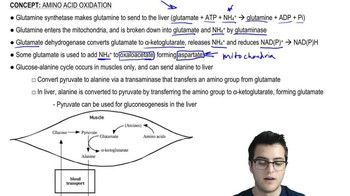The RNA synthesized on one of the DNA strands is:
a. mRNA
b. tRNA
c. rRNA
d. all of these.
 Verified step by step guidance
Verified step by step guidance Verified video answer for a similar problem:
Verified video answer for a similar problem:



 5:03m
5:03mMaster 1) Initiation of Translation with a bite sized video explanation from Bruce Bryan
Start learning